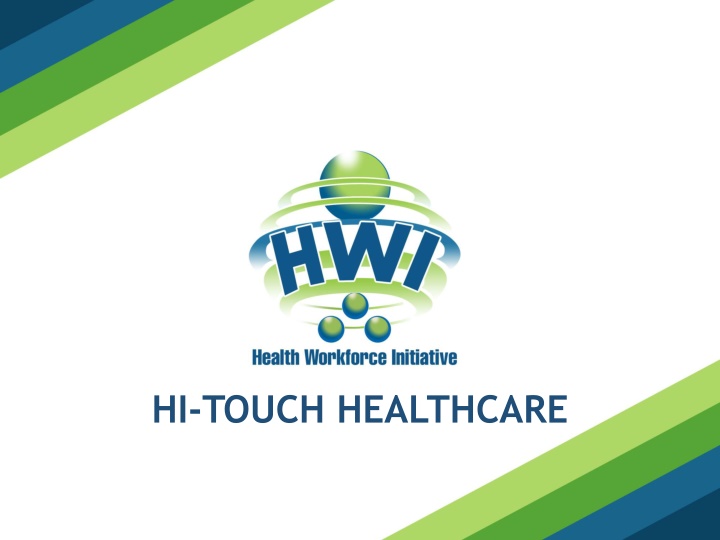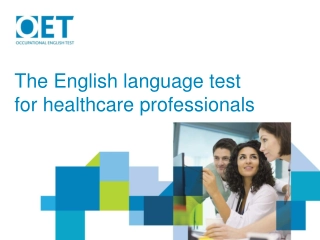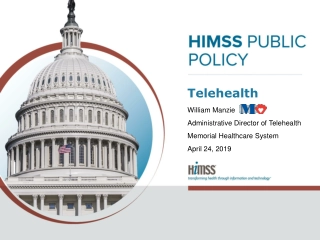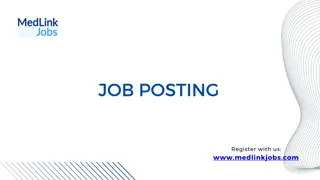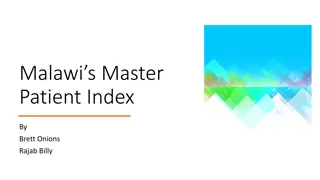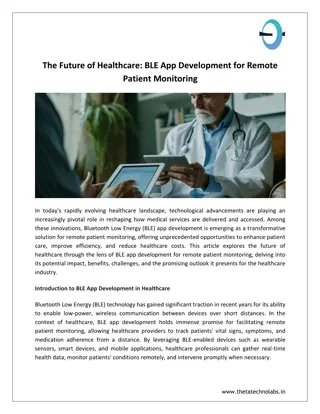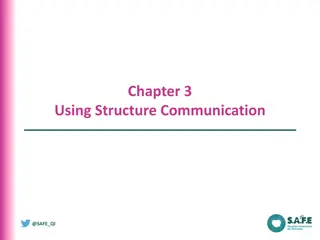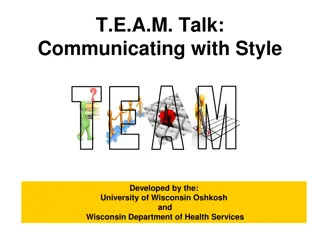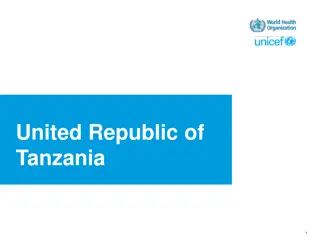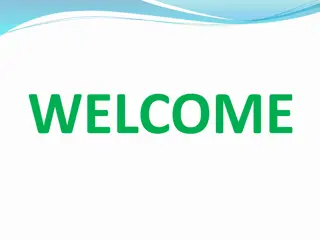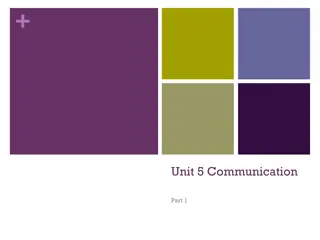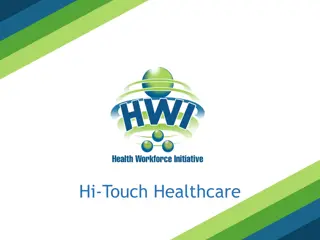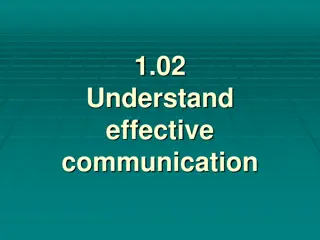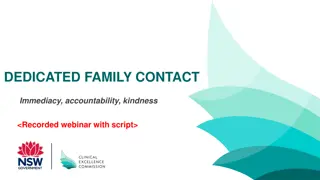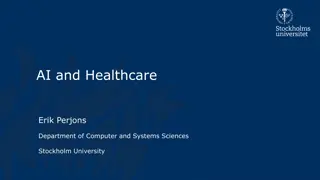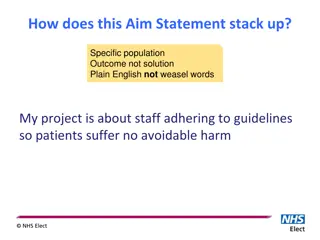Improving Healthcare Through Communication and Technology
Enhance healthcare delivery by focusing on soft skills and healthcare informatics. Explore the benefits of social media in healthcare, importance of communication, and the growing field of healthcare informatics. Discover myths and facts about social media, online boundary management, and the advantages of social media in patient education.
Download Presentation

Please find below an Image/Link to download the presentation.
The content on the website is provided AS IS for your information and personal use only. It may not be sold, licensed, or shared on other websites without obtaining consent from the author.If you encounter any issues during the download, it is possible that the publisher has removed the file from their server.
You are allowed to download the files provided on this website for personal or commercial use, subject to the condition that they are used lawfully. All files are the property of their respective owners.
The content on the website is provided AS IS for your information and personal use only. It may not be sold, licensed, or shared on other websites without obtaining consent from the author.
E N D
Presentation Transcript
WHAT TO EXPECT IN THIS PRESENTATION Overview of social media use in healthcare Misconceptions about social media Social media facts The dangers of social media use Online boundary management Public vs private self Social media competency
IMPORTANCE OF SOFT SKILLS Communication is the skill that can possibly have the greatest impact on effective healthcare delivery. It really is the key to clinical governance and demands as much attention, respect and sustaining as other seemingly harder targets. However, often the mere mention of the importance of communication causes less than positive reactions in healthcare professionals. (Jelphs, 2006, senior fellow at the Health Services Management Centre at the University of Birmingham)
Image result for healthcare informatics HEALTHCARE INFORMATICS: A GROWING FIELD Used more frequently to manage and communicate data, information, knowledge and wisdom in healthcare practice Increasingly used to connect healthcare employees and patients In May, 2016 the Joint Commission removed it s five year ban on texting stating: Text orders may be sent as long as a secure text messaging platform is used and the required components of an order are included. (Wicklund, 2016, para. 1)
ADVANTAGES OF SOCIAL MEDIA Enhances patient education and access to healthcare professionals Enhances patient and employee access to support networks Enables worldwide networking and educational opportunities Easy access to valuable health and wellness information A source of frequent, topic-specific updates (Facebook, Twitter, Pinterest, etc.)
GALLERY WALK ACTIVITY 1. There are 12 myths or facts about social media posted around the room. 2. Walk around the room and read each statement. 3. Place a sticker on each statement that you believe to be a fact. 4. Please return to your seat after reading each statement and identifying those that are factual. Myth Myth Fact Fact Fact
MYTHS FACTS Privacy settings are adequate to protect communications. Privacy settings can be changed without a person knowing it. If you send information marked as confidential, you are protected. Anyone can resend information to anyone. Deleted material can be copied or transmitted by others before it was deleted. If you delete a photograph or post, it will no longer be available. You can be held accountable for identifying patients through the use of pseudonyms. You will not be liable for a breach of confidentiality if you do not identify patients. Even though humor may be your intent, others may be offended by your comments. If you use humor in your blog post or communications, everyone will know that your intention is not serious. You should check with a colleague or supervisor before posting work related information. If you think it is appropriate to post or communicate information then it is okay to do so.
SOCIAL MEDIA FACTS 2.22 billion social network users worldwide. 78% of the US population has a social network profile. 94.41% of U.S. hospitals have adopted social media. 50.82% of U.S. hospitals have a Facebook page. (Statista, 2016; Griffis, et al, 2014).
"We don't have a choice on whether we DO social media; the question is how well we do it. Erik Qualman
ACTIVITY: 6 DEGREES OF SEPARATION Individually read and complete the Six Degrees of Separation worksheet. When instructed, share your answers with a partner.
6 DEGREES OF SEPARATION 1. V = Karen Chaz John Nurses must not identify patients by name, or post/ publish information that may lead to the identification of a patient. Limiting access to postings through privacy settings is not sufficient to ensure privacy. (NCSBN, 2011, p. 12). Sharon 2. V = Bill nurse David Amanda son is friends with Steve Posts about newspaper article Sharon Kayla nurse
6 DEGREES OF SEPARATION 3. V = Linyu doesn t realize that there is a patient in the background and since she works in the oncology ward she has revealed that the patient in the picture has cancer. 4. V = A violation because nurses must not make disparaging remarks about employers or co-workers (NCSBN, n.d., p. 13).
6 DEGREES OF SEPARATION 5. V = A violation since the patient s age and treatment are mentioned (NCSBN, 2011, p. 8). Sharon 6. V = A violation to make comments about organizational policies without permission to do so (NCSBN, 2011, p. 13).
6 DEGREES OF SEPARATION 7. V = A violation to make disparaging comments about a patient even if the patient is not identified (NCSBN, 2011, p. 12). 8. V = A violation since both the player s position and the injury were identified.
6 DEGREES OF SEPARATION 9. V = A violation because a patient status board is in the background of the picture. 10. V = A violation because the patient s condition and the medical team were identified.
SOCIAL MEDIA: PROCEED WITH CAUTION Solitary use of the internet creates an illusion of privacy. Both patients and healthcare employees are joining online networks. The lines between the public and the private become blurred. Even benign comments can be pieced together through the intertwining of social networks. which can lead to a violation of a patient's privacy or can damage professional relationships
ONLINE BOUNDARY MANAGEMENT Maintain professional boundaries Know the pertinent social media policies Maintain personal and private accounts Exercise extreme caution when discussing any patient-related experiences Avoid discussing co-workers online Avoid the use of Selfies on the job (American Nurses Association, 2011; National Council of State Boards of Nursing, 2011).
ACTIVITY: SOCIAL MEDIA MEET & GREET Group 1: Share one of your most challenging experiences working with a patient. Group 2: Share one of your most challenging experiences working with the families of patients. Group 3: Share one of your most rewarding experiences working with a patient. Group 4: Share one of your most rewarding experiences working with the families of patients.
SOCIAL MEDIA MEET & GREET ACTIVITY Transfer of glitter = Instantaneous and powerful transmission of messages via social media Social media is embedded in our everyday lives Vastly intertwined social networks Fast dissemination and transmission of messages Commonplace nature of information sharing and ease of posting messages Less time to evaluate the appropriateness of and ramifications of messages sent (Spector and Kappal, 2012, para. 36).
SOCIAL MEDIA: A PROFESSIONAL COMPETENCY Insert organization s social media policy here:
THANK YOU! Questions? Comments?
